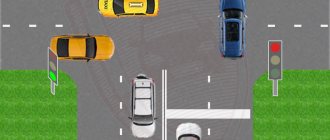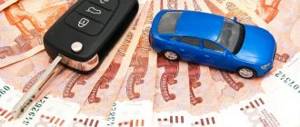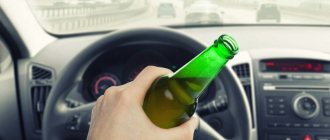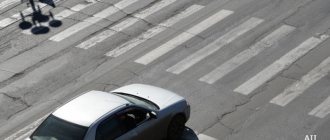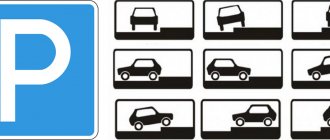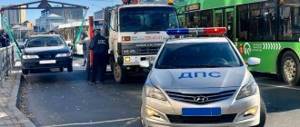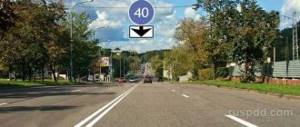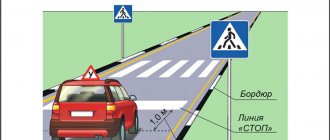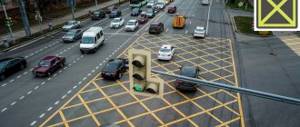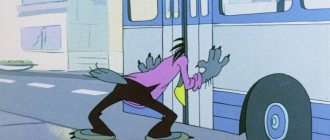In several Russian regions, drivers were warned about the start of seasonal migrations of wild animals. Reduced traffic caused by the pandemic could lead to more moose, foxes and wild boars venturing onto highways. Izvestia looked into how to avoid an accident with a wild animal and what the driver faces if it does occur.
Most accidents with wild animals occur in the evening, from 23:00 to 2:00, and in the morning, from 5:00 to 9:00. They run out onto the road quickly, and sometimes it is impossible to avoid a collision, warn the Ministry of Natural Resources of the Tver Region.
Fatal date: how to survive an encounter with the beast
Why is it better to shoot emaciated bears that are actively attracted to humans this fall?
The most dangerous on the road
Elk are not only the most common, but also the most dangerous participant in road accidents. In the Moscow region alone, according to statistics from the Ministry of Agriculture and Food, one and a half hundred accidents occur with them on the roads every year. In the spring, one-year-old moose leave their mother and go in search of new territories, suddenly appearing on the road in front of a moving car.
“Accidents with moose are the most dangerous; due to the elk’s anatomy, the impact falls on the windshield,” warned Nikolai Bondarenko, head of the state hunting supervision committee of the Nizhny Novgorod region. He added that moose have very poor eyesight and only a motorist can prevent an accident.
Moose test
Photo: IZVESTIA/Alexander Kazakov
The seriousness of the collision with a moose is evidenced by the accident that occurred the other day on the Protvino-Obolensk highway. As a result of the accident, passengers were seriously injured, and one even had to be urgently evacuated by helicopter to the hospital.
Secret sign: Arthurs and Kirills are more likely to get into road accidents, Nikitas are neat people
The names of the safest and most dangerous drivers in Russia have been revealed
What is the danger of an accident with a moose, cow and other large animals?
Elk is a massive animal, weighing about 500 kg. In the event of a collision, the center of gravity of the carcass will be located above the hood. This increases the level of danger, since there is a high probability that such an object will break through the windshield, flying into the cabin and injuring the people inside.
Places with an increased risk of collision with wild animals. It looks like a red triangle, inside of which is an image of a deer standing on its hind legs. An example of a sign is in the image on the right.
Characteristic signs of damage from a collision with elk, deer and similar large animals with long legs are that the hood and bumper are not damaged much, but the entire mass flies straight into the cabin through the windshield. It also causes significant damage to the roof. In this case, airbags and seat belts are useless.
In Russia there are many country roads passing through the forest - a habitat for large ungulates or a place for residents to graze local cattle. Roads intersect with their migration routes. In winter, such trails are especially attractive for animals, since there is little snow on them, and therefore it is easier to move along them. If the track is sprinkled with salt, then this is an additional bait for moose, as they love to lick this substance. Often they do not go to look for it in swamps and rivers, but head to the roads where it simply lies on the surface.
Autumn and spring initiate the appearance of an additional danger: the mating season begins in ungulates - the “rut”. Animals are aggressive and excited during it, so you need to be especially careful when meeting them. The elk's eyesight is very poor; it perceives most of its surroundings by hearing. When a car approaches, he tends to make sudden movements.
Drive around and return
It is not for nothing that the moose gave its name to the test used to check the handling of cars during an emergency maneuver. The essence is a double rearrangement: the driver goes to the left at speed, as if driving into oncoming traffic, and after going around an obstacle - the role of an animal on the road is played by cones - he returns to his lane.
Moose tests come from Scandinavia, and Swedish journalists from the publication Teknikens Värld are considered the greatest experts in high-speed detour of moose. It was they who turned the Mercedes-Benz A-Class upside down in 1997, and in 2019 they criticized the settings of the stabilization system of the RAV4 crossover. The Porsche Macan was able to show the maximum speed in the moose test among the Swedes, and this was only 81 km/h.
Russian drivers drive much faster on the highway, and not everyone is able to dodge an animal that suddenly appears on the road.
Sign 1.27 “Wild Animals” warns of a dangerous area. Usually it is placed outside populated areas at a distance of 150–300 m, and in populated areas at a distance of 50–100 m. Sometimes its coverage area is indicated by a sign. Unfortunately, animals don’t read signs and go wherever they want. If the animal was hit outside the coverage area of sign 1.27, this will not relieve the car owner from liability.
Moose test
Photo: Depositphotos
How to avoid a collision
If a moose or other large animal suddenly runs out onto a highway along which a car is moving at more or less high speed, then in most cases it is not possible to avoid a collision. At night, the successful outcome of such a meeting is zero. Only those who drive slowly will be lucky, which is rare on highways.
The only way to hope to avoid the serious consequences of an accident is to pay attention to signs 1.27 of the traffic rules “Wild Animals”. When you see them, you should slow down and drive slowly for some time.
IMPORTANT: The presence of such a sign almost automatically makes the driver guilty of a collision with a wild animal, since he did not choose a safe speed for the vehicle.
What to do in case of an accident
Although animals are not subject to traffic rules (SDR), nevertheless, when colliding with them, the driver must comply with all SDR requirements, lawyers say.
ZaSAGO to the fullest: why it’s better not to crash into a car with comprehensive insurance
A claim for compensation for an accident may come a year after the accident itself.
That is, immediately stop the car, turn on the emergency lights and put up a warning triangle - 15 m from the car in populated areas and 30 m outside them. If an accident occurs outside a populated area in the dark or in conditions of limited visibility, the driver must wear a jacket or vest with reflective stripes. Then you need to call the traffic police and wait for their arrival. In addition, you will need to contact the animal welfare committee and report the incident, although this is often done by inspectors.
If the animal is injured, you should call 112 and notify the need for veterinarians or relevant services to arrive.
If, after a collision with a car, the animal ran into the forest, the procedure is still the same, warns the head of the legal department, Vladislav Frolov. For leaving the scene of an accident, the driver faces deprivation of his license or administrative arrest for 15 days.
What to do if you hit a wild animal
The algorithm of actions, as in any accident:
- Call the traffic police and an ambulance if necessary.
- Do not touch anything until the traffic police arrive.
- Turn on the emergency lights, put up emergency signs.
- Provide first aid to victims if possible. It must be remembered that in some cases it is not advisable to move people with certain types of injuries. In emergency cases, road accident victims can be transported by car to the nearest hospital. It is advisable to do this in another vehicle, since it is recommended to leave the first one in place until the traffic police arrive.
Compulsory motor liability insurance provides for such insured events, and payments up to 400 thousand, and if harm is caused to human health - up to 500 thousand. As a rule, a CASCO agreement also includes them. But OSAGO is outraged by the damage to the culprit, and CASCO is outraged by the owner of the car.
If there is no policy or the insured event is not provided for in it, only the car is damaged and the elk is killed, you still do not need to leave the scene of the incident. Sometimes drivers do this because they believe that the car will have to be repaired at their own expense, so there is no point in calling the traffic police. Such actions are illegal - forest animals are the property of the state, to which the driver is obliged to compensate for damages for their death. Accordingly, if a motorist is caught, then in addition to the cost of the carcass, his driver’s license may be taken away for leaving the scene of an accident.
Article 137 of the Civil Code of the Russian Federation states that the same rules apply to animals as to property, unless otherwise provided by law.
It is also forbidden to take the elk carcass - this will aggravate the punishment for the driver. This meat is not ownerless, it belongs to the state (Article 4 of the Federal Law “On the Animal World”) and has its own cost - about 600 rubles / kg. There is about 200 kg of it in an animal, respectively, on average its cost is 100 thousand rubles. Such actions will be regarded as theft or poaching.
Don't touch anything
Usually it is recommended to drag a downed animal to the side of the road if it is small. It is not safe - it may be in its death throes or be a carrier of a fatal disease. In addition, the traffic rules prohibit moving objects related to the incident. It is interesting that, according to Russian legislation, an animal is equated to a thing and general rules on property apply to it.
Moose test
Photo: IZVESTIA/Alexander Kazakov
Single hit-and-run: how to look for killers behind the wheel
Monologue of an inspector on the search for drivers who fled the scene of an accident
If a driver involved in an accident creates obstacles for other road users, he can clear the roadway. Provided that he records the circumstances of the accident in all possible ways.
“In order for an official to comprehensively assess the circumstances of the incident, it is necessary to record the location of the vehicle on the roadway in relation to the animal, signs of braking, objects related to the accident,” said Dmitry Bezdelin, leading lawyer of the European Legal Service.
Akim Lozhkova, a lawyer at the Borodin and Partners law firm, recommends recording the circumstances of an accident based on the location and in the event that it snows, rains and traces may be lost.
Insurance and repairs in case of an accident with an animal
How to use insurance and restore a damaged car after a collision with an animal? Since a collision between a car and an animal is considered an accident, you can use an insurance policy. But at the same time, remember certain nuances.
Compulsory insurance (OSAGO)).
Receiving insurance compensation under the MTPL policy continues to be a controversial issue. When hitting a pet, usually no problems arise. Insurance companies classify collisions with them as road accidents and assume that they fall under the concept of an insured event. In such circumstances, they pay insurance compensation unconditionally.
The situation will be different if the collision is carried out on wild animals. Insurance companies are slow to provide compensation for damage or often simply refuse it. There's not much chance of getting it. Therefore, it is better not to contact the insurance company so as not to lose the CBM (discounts on your next insurance for accident-free driving).
The MTPL policy does not cover cases of restoration of the damaged car of the person responsible for the accident. It is generally used to indemnify third parties. To do this, use the CASCO policy. But in order for an accident involving an animal to be considered an insured event, keep the following in mind.
Voluntary insurance (CASCO, DSAGO and others).
Not all insurers provide insurance for accidents involving animals and provide compensation for damage to the driver of the vehicle. Therefore, when signing an agreement, carefully read the contents of the agreement and make sure that this situation is provided for in it.
The difficulty in obtaining insurance compensation may include the following. For example, this case is an insurance case. But after the collision, the wounded animal left the scene. There are no witnesses to the incident. There is also no evidence of an accident. The insurance company may refuse to pay compensation for repairs.
Under any circumstances, when encountering animals, act in accordance with the law. This will free you from unnecessary expenses and unnecessary problems with law enforcement agencies.
Wild penalties
Police officers will initiate an administrative case. As a rule, those responsible for road accidents are punished for related violations, such as speeding, says lawyer Dmitry Bezdelin. There is no separate liability for a downed animal provided for by law.
Drivers' liability for traffic violations will be increased
Road deaths should reach zero by 2030
Meanwhile, the driver will still have to pay a fine issued by the forestry employee on whose territory the accident occurred. He is issued for material damage to state property, since wild animals are the property of the state. For example, you will have to pay 200 rubles for a downed fox, 30 thousand for a wild boar, and 80 thousand rubles for a moose. An exotic bison will cost 180 thousand rubles.
The amount of the fine is fixed, but the managing partner of the Zharov Group, lawyer Evgeny Zharov, cites as an example the decision of the Lipetsk City Court, which fined the driver who hit a moose cow 175 thousand rubles. The amount of the fine included damage from the death of future moose calves, which this 4-year-old female moose could still give birth to.
Fine, cost of the downed animal
According to the Code of Administrative Offenses of the Russian Federation, there is no special liability for a downed animal. If an accident occurs in the area covered by the “Cattle Driving” or “Wild Animals” signs, then the maximum that threatens the driver is failure to comply with the requirements established by the road signs. That is, we are talking about Part 1 of Art. 12.16 of the Code of Administrative Offenses of the Russian Federation, entailing a fine of 500 rubles or a warning.
Much more serious sanctions for damage to wildlife if a wild animal is shot down. The standards for compensation for damage caused to wildlife were approved by Order of the Ministry of Natural Resources of December 8, 2011 N 948
Tables of “tariffs” for damage compensation are below.
There are different prices for each type. You will even have to pay for chipmunks, moles, wolves, foxes (100 rubles each) if the motorist is caught and proven guilty. The prices were approved by the Ministry of Nature of the Russian Federation No. 948 dated December 8, 2011 and are valid for 2021. These prices are just basic prices. The said normative act also approved the methodology for calculating compensation. In some cases, an elk carcass will cost 120 thousand rubles. depending on the coefficient.
The collection of these amounts occurs in court, that is, no one will write it out at the scene of the accident.
An accident with wild animals means damage to state property. Accordingly, when leaving the scene of an accident, these actions are regarded as hiding from the scene of an accident under the relevant article, punishable by deprivation of a driver’s license for 1.5 years, and can also be arrested for 15 days.
By taking the carcass with him, the motorist risks additional charges of poaching, which is fraught with criminal prosecution with a separate fine of 240 to 560 thousand rubles. Registration of an accident in accordance with the law will be much cheaper with fewer sanctions.
Domestic - not wild
There are no fixed penalties for hitting livestock or poultry, but the owner of the animal can sue the driver for damages based on available documents, such as a cow sales contract.
Moose test
Photo: RIA Novosti/Alexander Kryazhev
“In the case of domestic animals, the driver is most often innocent, unless he hit livestock in the coverage area of warning sign 1.26 “Livestock Driving” or hit the owner of a pet along with the animal at a pedestrian crossing,” says legal director Vladislav Frolov .
Without a policy, an ambush: fines for driving without compulsory motor liability insurance can increase seven times
Deputies are thinking about toughening penalties for lack of insurance
Moreover, the driver can recover damages from the animal owner if he proves that he improperly performed his duties. For example, he left the animal unattended or drove cattle across the road outside specially designated areas, as well as in the dark.
Taxes for calculating the amount of damage caused to hunting resources
| No. | Types of hunting resources | Dachshund (rubles per 1 individual) |
| 1. | Elk, Siberian mountain goat, musk ox | 40000 |
| 2. | Wild boar, wild reindeer, musk deer | 15000 |
| 3. | Noble deer | 35000 |
| 4. | Sika deer, fallow deer, aurochs, saiga | 30000 |
| 5. | Roe deer, mouflon, chamois | 20 000 |
| 6. | bighorn sheep | 50 000 |
| 7. | Hybrid of bison with bison, livestock | 90 000 |
| 8. | The Bears | 30 000 |
| 9. | Badger | 6000 |
| 10. | Marmots, beavers, martens, harza | 3000 |
| 11. | Sable, otter | 5000 |
| 12. | Wolverine | 15 000 |
| 13. | Lynx | 20 000 |
| 14. | Wolf, fox, jackal, raccoon, raccoon dog, muskrat | 100 |
| 15. | Arctic fox, corsac fox, wild cats, minks, horis, weasels, hares, wild rabbit | 500 |
| 16. | Ermine, solongoi, weasel | 200 |
| 17. | Squirrels | 250 |
| 18. | Moles, water voles, hamsters, chipmunks, flying squirrels, gophers | 50 |
| 19. | Capercaillie | 3000 |
| 20. | Black grouse, pheasants, snowcocks, saja | 1000 |
| 21. | Geese, geese | 500 |
| 22. | Ducks, hazel grouse, partridges, chukar, pigeons, coot, woodcock | 300 |
| 23. | Quail, rail, common crake, corncrake, moorhen, lapwing, tule, snapper, turnstone, turukhtan, grasshopper, snails, morodunka, godwits, curlews, snipe, great snipe, cockle snipe, doves. | 100 |
What will the insurance cover?
A serious fine for hitting an animal is the last thing a car owner should care about. If the accident is documented correctly and there is a valid MTPL policy, then the insurance company will pay. The limit of 400 thousand rubles covers the cost of any wild animal and most domestic animals.
At the same time, the insurance company will not be able to subsequently issue recourse claims to the driver, unless he was under the influence of alcohol or drugs, fled the scene of the accident, or drove without a driver’s license.
Further trouble awaits the driver. It will not be possible to repair a car under compulsory insurance, nor will it be possible to compensate for damage to the health of passengers, said lawyer Akim Lozhkova.
Moose test
Photo: IZVESTIA/Zurab Javakhadze
“OSAGO compensates for damage caused by a driver who has an MTPL policy - other road users. That is, my MTPL policy covers damage caused by me to others,” he explained.
Mitigating circumstances to reduce the fine
The fine for a downed moose in 2021 may be reduced or not imposed in the following cases:
- on the section of the road where the incident occurred, the “Wild Animals” sign was not installed;
- an exit onto the highway was made from a road leading to a populated area outside the visibility range of the sign;
- the animal remained alive, tried to escape or had already left the scene;
- the driver was not able to make a timely decision to stop due to weather conditions;
- the events were accompanied by circumstances of indefinable force.
Any of the above circumstances must be recorded when drawing up a protocol by a traffic police officer, confirmed by the culprit and documented.
Subtleties of comprehensive insurance
The bot will judge: payment for comprehensive insurance can be processed in the messenger
Car insurers are actively developing electronic channels for compensation of losses, but clients do not yet trust them
A comprehensive insurance policy allows you to receive compensation for a damaged car in full, but with harm to health, everything is so simple. The volumes are indicated in the insurance conditions, Lozhkova clarified. The policy may contain the maximum amount of coverage and risks or minimum risks - theft or complete loss of the car. In the second option, health compensation is not provided.
“An insurance company can make an insurance payment to victims if they have an accident insurance policy for the driver and passengers,” said Alexey Vasiliev, insurance director of the consulting company.
